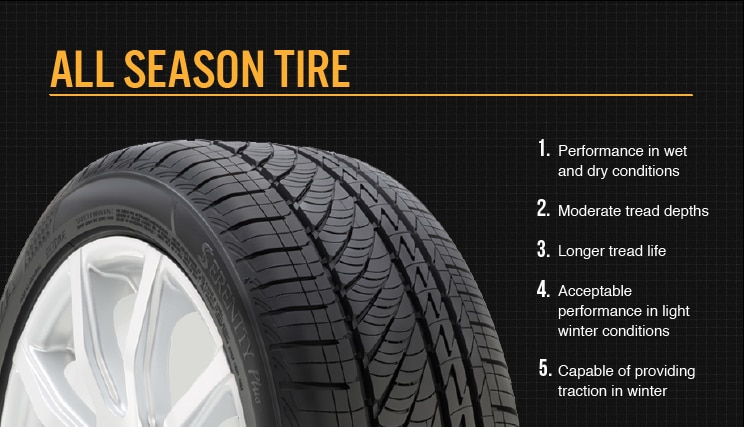An all-season tire offers a balance of capabilities, providing acceptable performance in wet and dry conditions, as well as traction in snow.
Built for the average driver, all-season tires have moderate tread depths and rubber compounds that are engineered to provide longer tread life than summer tires, which have shallower tread depths. All-season tires are offered in many types/models, sizes, load capacities, and speed ratings for use on a wide variety of vehicles from economy cars to sedans to minivans to pickup trucks. They tend to provide ride comfort, handling, and other performance attributes suitable for most drivers.
All-season tires perform well in warm weather, but they may offer less grip than summer tires, sacrificing some steering, braking, and cornering capabilities. This trade off is necessary for all-season tires to be able to provide acceptable performance in light winter conditions and provide longer tread life.
All-season tires are capable of providing traction in winter, but are not the best tire to use in extreme winter driving conditions. Drivers who encounter extreme winter weather may want to consider switching to snow tires in the winter.
Because all-season tires offer a blend of summer and winter performance, they are often a good option for drivers in moderate climates and driving conditions.


Add Comment